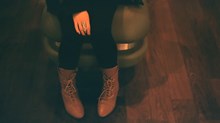Calming Your Anxious Baby
Has your baby suddenly changed from a smiling cherub to a crying, malcontented baby whenever someone else holds him? Almost all babies go through a normal phase called separation anxiety?not to be confused with stranger anxiety?at around 6 months. Separation anxiety is an increased unwillingness to be apart from the usual caregiver, most likely mom. And it's perfectly normal.
Separation anxiety is the natural result of your baby's growing recognition that there is a world beyond her parents. This new world can be as intimidating as it is exhilarating. Your departure into a different room signals a shift in that world that your baby simply isn't comfortable with right now.
Here are a few ideas to make this stage easier for both of you:
? Play peek-a-boo with your little one so she can begin to learn that when something (like you) disappears, it always comes back.
? When using a baby sitter, schedule your departure after a nap or meal. If you child's basic needs are met, the transition may go more smoothly. Also suggest the sitter come 30-minutes before you leave to give your baby some unhurried, get-acquainted time.
? Have someone else hold your baby while staying close enough for her to see and touch you.
? When your spouse or another competent caregiver is around, leave the room for a little while, popping back in every ten minutes or so let your baby know you're still around.
While it may seem like your baby is becoming more dependent on you than she used to be, this phase is actually her first step toward independence.
?Tamra Orr, writer and mother of four
Are Nightlights Alright?
Recent studies have suggested that nightlights could be harmful to an infant's developing vision. In 1999, researchers from the University of Pennsylvania published a study in Nature. The study tested the vision of 479 children visiting an outpatient eye clinic. They interviewed parents about infant sleeping conditions. Thirty-five percent of infants who slept with a nursery nightlight developed myopia, or nearsightedness, in their schoolage years. Of those who slept with room lights on, 55 percent developed the problem. The study suggested that eyes need darkness to rest completely and that the presence of even a little light prevented that from happening. As a result, eye muscles would weaken earlier than normal.
However, researchers from the University of Ohio reported different findings from a larger study in a 2000 issue of Nature. Of the 1,220 children they tested nationwide, 17 percent of those who slept with a nightlight and 22 percent of those who slept in a fully-lit room later became nearsighted during childhood. Statistically, these percentages aren't high enough to offer concrete proof that nursery nightlights cause nearsightedness.
?Rachel Gilmore writer, mother of three
Copyright © 2001 by the author or Christianity Today/Christian Parenting Today Magazine.
Click here for reprint information on Christian Parenting Today.
Read more articles that highlight writing by Christian women at ChristianityToday.com/Women
 Read These Next
Read These Next

 A Monster in the ClosetMaking a clean sweep of life's hidden junk
A Monster in the ClosetMaking a clean sweep of life's hidden junk
 I Want to Get Married . . . But I Don’t Want to DateHow having a good life can lead to a tough time finding a husband.
I Want to Get Married . . . But I Don’t Want to DateHow having a good life can lead to a tough time finding a husband.








 Homepage
Homepage